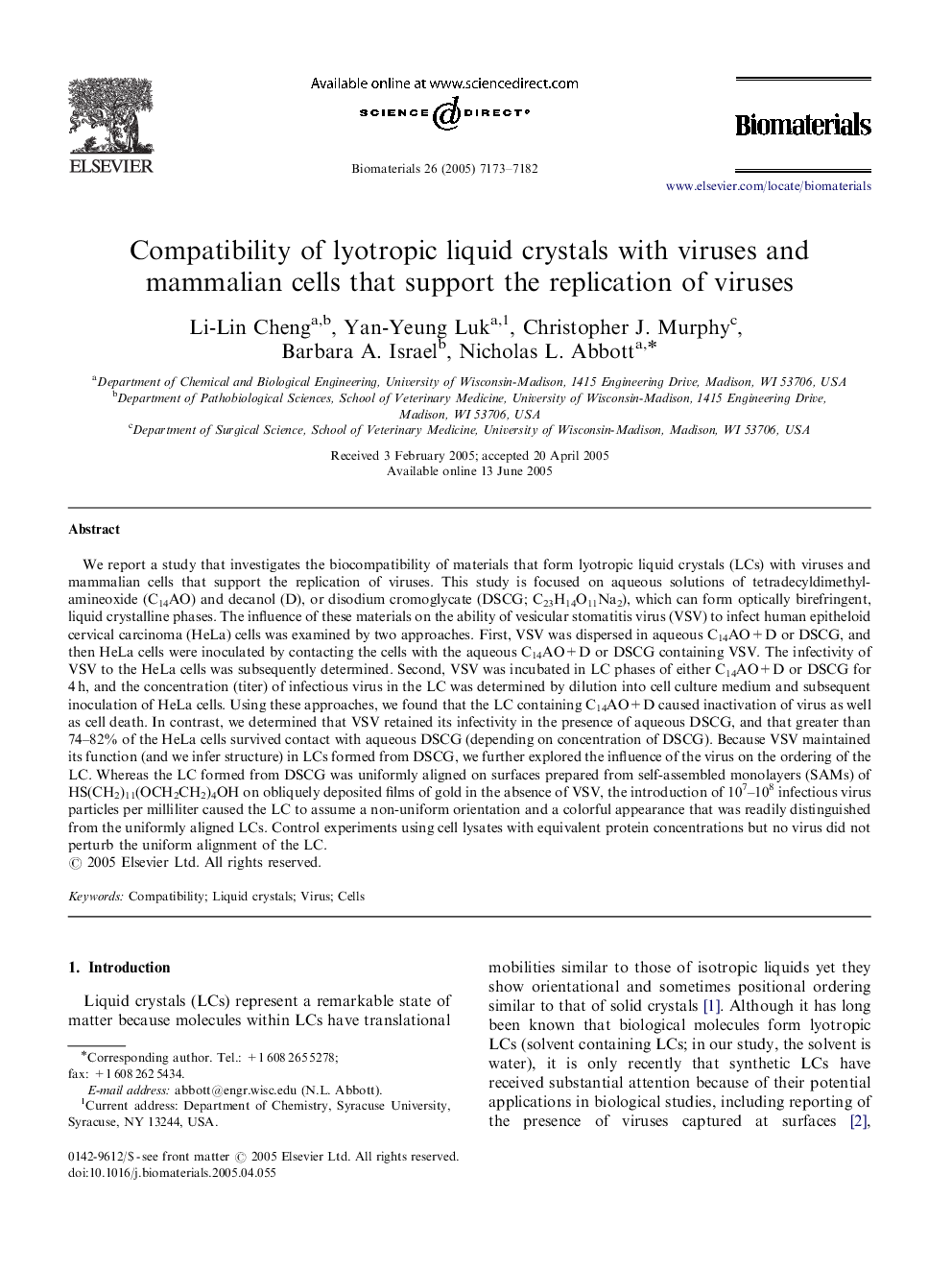| کد مقاله | کد نشریه | سال انتشار | مقاله انگلیسی | نسخه تمام متن |
|---|---|---|---|---|
| 12475 | 793 | 2005 | 10 صفحه PDF | دانلود رایگان |

We report a study that investigates the biocompatibility of materials that form lyotropic liquid crystals (LCs) with viruses and mammalian cells that support the replication of viruses. This study is focused on aqueous solutions of tetradecyldimethyl-amineoxide (C14AO) and decanol (D), or disodium cromoglycate (DSCG; C23H14O11Na2), which can form optically birefringent, liquid crystalline phases. The influence of these materials on the ability of vesicular stomatitis virus (VSV) to infect human epitheloid cervical carcinoma (HeLa) cells was examined by two approaches. First, VSV was dispersed in aqueous C14AO+D or DSCG, and then HeLa cells were inoculated by contacting the cells with the aqueous C14AO+D or DSCG containing VSV. The infectivity of VSV to the HeLa cells was subsequently determined. Second, VSV was incubated in LC phases of either C14AO+D or DSCG for 4 h, and the concentration (titer) of infectious virus in the LC was determined by dilution into cell culture medium and subsequent inoculation of HeLa cells. Using these approaches, we found that the LC containing C14AO+D caused inactivation of virus as well as cell death. In contrast, we determined that VSV retained its infectivity in the presence of aqueous DSCG, and that greater than 74–82% of the HeLa cells survived contact with aqueous DSCG (depending on concentration of DSCG). Because VSV maintained its function (and we infer structure) in LCs formed from DSCG, we further explored the influence of the virus on the ordering of the LC. Whereas the LC formed from DSCG was uniformly aligned on surfaces prepared from self-assembled monolayers (SAMs) of HS(CH2)11(OCH2CH2)4OH on obliquely deposited films of gold in the absence of VSV, the introduction of 107–108 infectious virus particles per milliliter caused the LC to assume a non-uniform orientation and a colorful appearance that was readily distinguished from the uniformly aligned LCs. Control experiments using cell lysates with equivalent protein concentrations but no virus did not perturb the uniform alignment of the LC.
Journal: Biomaterials - Volume 26, Issue 34, December 2005, Pages 7173–7182